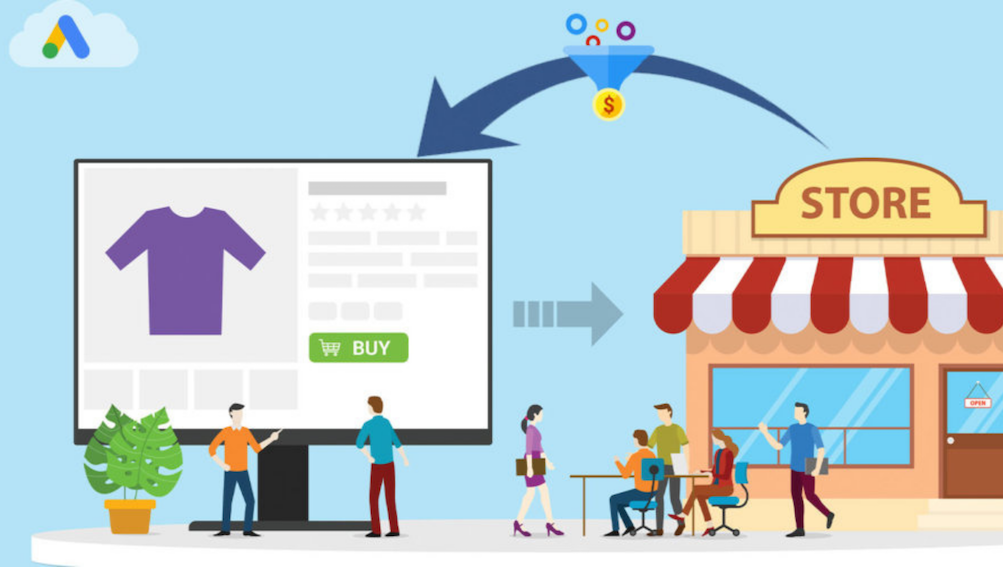What Are Offline Conversions and How Can You Measure Them?
01/22/2024
Unlocking the full picture of customer interactions is crucial in today’s omnichannel landscape, where online and offline touchpoints seamlessly intertwine. Offline conversions, encompassing in-store purchases, phone calls, and other non-digital actions, present a significant challenge for marketers seeking to measure and attribute the success of their online efforts. In this blog post, we delve into the complexities of offline conversions and explore effective measurement strategies. Let’s dive in!

What is an Offline Conversion?
An offline conversion refers to a desired action or transaction that takes place outside the online environment, such as a purchase made in a physical store or a phone call.
Types of Offline Conversions
Offline conversions can take various different forms, such as:
In-Store Purchases

When customers make purchases at physical brick-and-mortar stores.
Phone Calls

Conversions resulting from customers contacting a business via phone, often traced back to online marketing efforts.
Event Attendance

Conversions may involve attending events, seminars, or workshops organized by a business.
Print Advertising

Responses to print advertisements, such as coupons or promotional material, that lead to offline actions.
Direct Mail

A traditional form of offline conversion where promotional materials, such as postcards or flyers, are physically sent to individuals through postal mail to encourage a desired action or response.
Referral Programs

When existing customers refer others to the business, and those referrals convert offline.
Offline Surveys or Sign-Ups

Conversions resulting from customers completing surveys or signing up for services through offline means.
Strategies for Offline Conversion Tracking
Tracking offline conversions can be challenging. Here are the most common strategies that brands use to measure and attribution these conversions to online efforts:
Unique Coupon Codes
Provide customers with unique coupon codes they can use for in-store purchases. By tracking the usage of these codes, businesses can attribute offline sales to specific online campaigns.
Dedicated Phone Numbers
Use dedicated phone numbers in online advertisements or campaigns. Calls to these numbers can be tracked, helping businesses connect phone-based conversions to specific online sources.
QR Codes
Incorporate QR codes in online materials that customers can scan in-store to avail discounts or special offers. The scans can be tracked to measure the impact of online marketing.
Custom Landing Pages
Create unique landing pages for specific offline campaigns. Encourage customers to visit these pages for more information or special offers, and track conversions originating from those pages.
Customer Surveys
Include questions in post-purchase surveys to understand how customers learned about the product or service. This can provide insights into the effectiveness of various online channels.
Geo-Targeting
Utilize geo-targeting features in online advertising to reach specific local audiences. Analyze sales data from local areas to gauge the impact of online efforts on offline conversions.
Partner Collaborations
Collaborate with offline partners and retailers to share data on sales generated through online campaigns. This can involve establishing partnerships and agreements for data sharing.
Customer Loyalty Programs
Implement loyalty programs that require customers to sign up online but offer rewards for in-store purchases. Monitor the enrollment and redemption data to understand the impact of online marketing efforts.
Data Matching
Use data matching services or tools to link online and offline customer data. This involves matching online interactions with offline transactions using common identifiers.
Cross-Channel Analytic Platforms
Implement analytics platforms that integrate both online and offline data. These platforms provide a comprehensive view of customer interactions across various channels.
Why it’s Important to Set Up Offline Conversion Measurement

Setting up offline conversion measurement in marketing is crucial for many reasons:
Comprehensive Performance Evaluation
By tracking offline conversions, brands can obtain a more comprehensive view of their overall marketing performance. This allows for a holistic assessment of the impact of online campaigns on both online and offline customer actions.
Optimization of Marketing Strategies
Understanding the contribution of online efforts to offline conversions enables marketers to optimize their strategies. They can allocate resources more effectively, invest in high-performing channels, and refine campaigns for better results.
Budget Allocation
Accurate measurement of offline conversions helps in making informed decisions about budget allocation. Businesses can allocate marketing budgets based on channels that contribute significantly to both online and offline conversions.
ROI Calculation
Determining the return on investment (ROI) is a fundamental aspect of marketing. Tracking offline conversions allows businesses to calculate the true ROI of their online campaigns, providing insights into the actual revenue generated compared to the marketing spend.
Customer Journey Understanding
Many customer journeys involve a combination of online and offline interactions. Tracking offline conversions helps brands understand the complete customer journey, from online research to offline purchase, enabling more effective targeting and engagement strategies.
Optimized Customer Experience
By knowing which online channels or campaigns drive offline conversions, businesses can tailor the customer experience accordingly. This may include creating seamless transitions between online and offline touchpoints to enhance customer satisfaction.
Data-Driven Decision Making
Offline conversion data provides valuable insights that support data-driven decision-making. Marketers can rely on accurate data to refine strategies, target the right audiences, and adapt their approach based on real-world customer behavior.
Enhanced Accountability
Tracking offline conversions enhances accountability within marketing teams. It allows teams to demonstrate the impact of their efforts on overall business goals, fostering a culture of accountability and data-driven performance improvement.
Competitive Advantage
Businesses that effectively measure and leverage offline conversions gain a competitive advantage. They are better positioned to understand customer behavior, optimize marketing strategies, and adapt to changing market dynamics more efficiently than competitors that rely solely on online metrics.
Offline Conversions Are a Great Example of Why Traditional Marketing Attribution Doesn’t Work
Offline conversions highlight the limitations of traditional marketing attribution models, which often struggle to accurately account for the complex and multifaceted nature of customer journeys spanning both online and offline channels. Here are the main reasons why traditional marketing attribution just doesn’t work for measuring offline conversions:
Limited Visibility
Traditional attribution models primarily focus on online touchpoints, such as clicks, impressions, and online conversions. They may lack visibility into the entire customer journey, especially when significant interactions and conversions occur offline, such as in physical stores or through phone calls.
Cross-Channel Interactions
Customers often engage with multiple channels before making a purchase, and these channels may include both online and offline elements. Traditional attribution models struggle to account for the interplay between these channels, leading to an incomplete understanding of the customer journey.
Limited Attribution to Branding and Awareness
Traditional attribution models may struggle to assign value to branding and awareness campaigns that contribute to offline conversions. These campaigns often play a crucial role in shaping customer perceptions and driving offline actions but may be overlooked in traditional attribution models that prioritize last-click attribution.
Privacy Concerns/Risks
Using traditional marketing attribution to measure offline conversions can put your brand at risk for compliance issues with privacy changes and state-by-state privacy regulations, especially when it involves tracking and analyzing personal/individual identifiable customer data.
Channel Blind Spots
Traditional attribution models may not effectively attribute value to offline channels or fail to recognize their impact. This creates blind spots, as traditional models may not consider the influence of events, in-store experiences, or other offline touchpoints on the conversion process.
Inability to Connect Online and Offline Data
Traditional attribution models often operate within silos, separating online and offline data. This segregation makes it challenging to connect the dots and attribute value to online marketing efforts that ultimately lead to offline conversions.
Customer Behavior Complexity
The complexity of customer behavior, especially when transitioning between online and offline environments, poses a challenge for traditional attribution models. For example, a customer may research a product online but make the final purchase decision in a physical store, making it difficult to attribute the conversion accurately.
Delayed Conversions
In some cases, offline conversions may occur well after the last online touchpoint. Traditional models may struggle to attribute value to earlier online interactions that influenced the final conversion, especially if they prioritize short-term attribution windows.
Luckily, there is a better (privacy-safe) way to measure offline conversions: agile marketing mix modeling and optimization with OptiMine. OptiMine provides the fastest, most actionable cross-channel measurement for all digital and traditional marketing across any online and offline conversion points. Contact us today to learn about how we can help your brand accurately measure its offline conversions and so much more!

